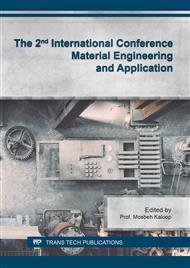p.137
p.141
p.145
p.149
p.165
p.174
p.179
p.183
p.187
Modelling of Dust Dispersion of Emissions from Expanded Clay Manufacturing in the Atmosphere
Abstract:
The manufacturing of expanded clay represents a certain hazard to the environment and human health. The emissions contain a significant amount of fine dust, and the enterprises are located in close proximity to residential areas. Fine dust particles can stay in the air for a long time, they are transported over long distances thereby increasing the contaminated zone. The OND-86 method (the Industry Regulatory Document) is used to calculate dust dispersion in the atmosphere, which does not take into account a series of factors that determine the dispersion parameters, for example, air humidity. The authors have obtained one-parameter regression equations between the concentration of expanded clay dust in atmospheric air and the influencing factors: air temperature, relative air humidity, distance from the source, wind speed. A strong correlation dependence between the concentration of expanded clay dust and the relative air humidity has been established. An adequate multiple correlation equation that establishes a relationship between the dust concentration and the factors listed has been obtained. The given equation was used in practice when performing dispersion calculations, including the forecasting ones. The authors give the forecast of pollution with expanded clay dust for 2018.
Info:
Periodical:
Pages:
179-182
Citation:
Online since:
January 2018
Keywords:
Price:
Сopyright:
© 2018 Trans Tech Publications Ltd. All Rights Reserved
Share:
Citation:


